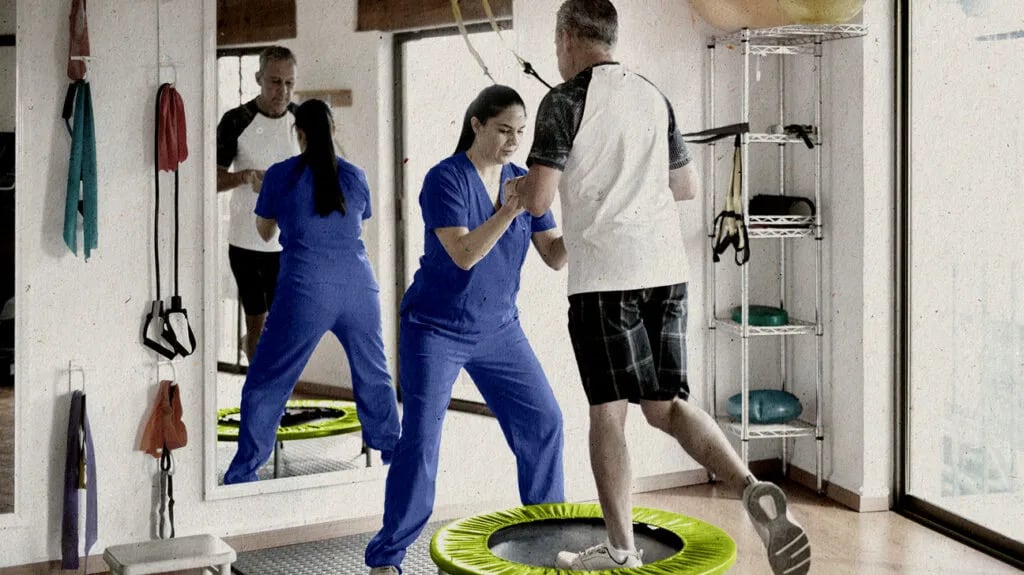Physical therapy is a vital resource for seniors, helping them maintain mobility and improve their overall quality of life. As we age, our bodies naturally lose strength and flexibility, leading to increased risk of falls and injuries. Engaging in tailored physical therapy programs can enhance balance, reduce pain, and promote independence. It’s not just about recovery from surgery or injury; it’s also about preventing future problems and ensuring seniors stay active and healthy. Investing in physical therapy can lead to a happier, more fulfilling life in the golden years.
The Aging Process and Its Impact on Mobility
As we age, our bodies undergo various changes that can significantly affect mobility. Muscles weaken, joints may become stiff, and balance diminishes, increasing the likelihood of falls. These physical changes can lead to a sedentary lifestyle, further exacerbating health issues. Understanding these challenges is crucial for seniors and their caregivers. Physical therapy can be an effective intervention, focusing on strength, flexibility, and balance training tailored to the individual’s needs. By addressing these issues proactively, seniors can enjoy improved mobility and a more active lifestyle.
Understanding Age-Related Changes
As we age, our bodies naturally undergo changes that affect mobility. Muscle mass declines, joints may stiffen, and balance can deteriorate, making falls more likely. Recognizing these changes helps seniors and caregivers understand the importance of proactive measures to maintain mobility and independence. Addressing these physical challenges early on can lead to healthier, more active lifestyles and ultimately enhance overall well-being as one ages.
The Importance of Physical Therapy

Physical therapy is a vital resource for seniors seeking to improve their mobility. Through tailored exercises focusing on strength, flexibility, and balance, physical therapists can help individuals regain lost capabilities. This personalized approach ensures that seniors are not only recovering from injuries but are also building a foundation for long-term health. Committing to a physical therapy regimen can lead to significant improvements in mobility and quality of life.
Strengthening Muscles for Stability
Building muscle strength is essential for maintaining stability and preventing falls in seniors. Targeted exercises help fortify the muscles that support joints and improve overall body mechanics. Physical therapists design individualized strength-training programs that cater to each senior’s unique needs. As muscle strength increases, seniors often experience enhanced balance and coordination, allowing them to engage more confidently in daily activities and reduce their risk of injury.
Enhancing Flexibility and Joint Health
Flexibility plays a crucial role in maintaining mobility as we age. Stiff joints can limit movement, making everyday tasks more challenging. Physical therapy incorporates stretching and range-of-motion exercises to enhance flexibility and promote joint health. These practices help alleviate discomfort and improve circulation, making it easier for seniors to perform daily activities. By prioritizing flexibility through therapy, seniors can enjoy a more active lifestyle with reduced pain and increased ease of movement.
Promoting Balance for Fall Prevention
Improving balance is one of the key focuses of physical therapy for seniors. Balance exercises train the body’s ability to maintain stability, significantly reducing the risk of falls. Physical therapists utilize various techniques and equipment to challenge balance safely, enabling seniors to build confidence in their movements. A strong focus on balance not only protects against falls but also empowers seniors to engage in social and physical activities with greater assurance.
Benefits of Personalized Physical Therapy
Personalized physical therapy is designed to cater specifically to the unique needs of seniors. Each individual presents different challenges, whether recovering from surgery, managing chronic pain, or dealing with age-related decline. A qualified physical therapist assesses each senior’s condition and creates a tailored program that includes targeted exercises and techniques. This personalized approach ensures that therapy is effective and engaging, helping seniors gain strength, increase endurance, and improve overall function. Ultimately, personalized physical therapy fosters independence and enhances the quality of life for older adults.
Preventing Falls Through Physical Therapy
Falls are a leading cause of injury among seniors, making prevention a top priority. Physical therapy plays a key role in fall prevention by improving balance, coordination, and strength. Therapists employ specialized exercises to enhance stability and teach seniors how to navigate their environments safely. In addition, they often provide education on the proper use of assistive devices, like canes or walkers, which can further reduce fall risk. By proactively addressing these concerns, physical therapy helps seniors feel more secure and confident in their movements, ultimately promoting a more active lifestyle.
Rehabilitation After Surgery or Injury
Recovering from surgery or injury can be a daunting process for seniors, but physical therapy can significantly enhance recovery outcomes. After procedures like hip or knee replacements, physical therapy is often prescribed to regain strength and mobility. Therapists guide seniors through exercises that promote healing while minimizing pain and discomfort. This rehabilitation process is crucial not only for restoring function but also for preventing complications like stiffness or muscle atrophy. With the right physical therapy plan, seniors can regain their independence and return to daily activities more quickly and safely.
Managing Chronic Pain with Physical Therapy
Chronic pain can be debilitating for seniors, affecting their ability to engage in daily activities and enjoy life. Physical therapy offers effective strategies to manage pain without relying solely on medications. Therapists use a combination of manual therapy, targeted exercises, and modalities like heat or cold therapy to alleviate discomfort. By focusing on strengthening surrounding muscles and improving flexibility, physical therapy addresses the root causes of pain rather than just the symptoms. This holistic approach not only reduces pain but also enhances mobility, enabling seniors to lead more fulfilling lives.
Improving Mental Health Through Physical Activity
Physical health and mental well-being are closely interconnected, especially for seniors. Engaging in regular physical therapy can have a positive impact on mental health by reducing symptoms of anxiety and depression. Exercise releases endorphins, which are natural mood lifters, and provides a sense of accomplishment and purpose. Additionally, the social aspect of physical therapy—interacting with therapists and other patients—can combat feelings of isolation. By prioritizing physical therapy, seniors can improve their mental health while also enhancing their physical strength and mobility, leading to an overall better quality of life.
The Role of Caregivers in Supporting Physical Therapy
Caregivers play a crucial role in facilitating the physical therapy journey for seniors. Their support can make a significant difference in how effectively a senior engages with their therapy program. Caregivers can help by ensuring that therapy sessions are attended regularly, assisting with exercises at home, and providing motivation and encouragement. Communication between caregivers and therapists is also vital to monitor progress and adjust treatment plans as needed. With the right support, caregivers can help seniors fully benefit from physical therapy, leading to improved outcomes and a more fulfilling life.
Making Physical Therapy Accessible for Seniors
Accessing physical therapy services can sometimes be a challenge for seniors, but there are several strategies to overcome these barriers. Many clinics offer transportation assistance or home health services that bring therapy directly to the senior’s residence. Additionally, community resources like senior centers often provide affordable or free exercise classes tailored for older adults. Technology also plays a role, with telehealth options allowing seniors to connect with therapists remotely. By exploring these avenues, seniors can ensure they receive the physical therapy they need, supporting their health and independence as they age.
Conclusion
Incorporating physical therapy into the lives of seniors is vital for maintaining mobility, enhancing strength, and promoting overall well-being. At ActiveMed Integrative Health Center in Encinitas, CA, our dedicated team is committed to providing personalized care tailored to the unique needs of older adults. Through targeted therapy programs, we empower seniors to regain independence and improve their quality of life.
If you have any questions or would like to learn more about our physical therapy services, please don’t hesitate to reach out. Contact us at +1 (858) 673-4400 or visit us at ActiveMed Integrative Health Center, Encinitas, CA. Your health is our priority!




